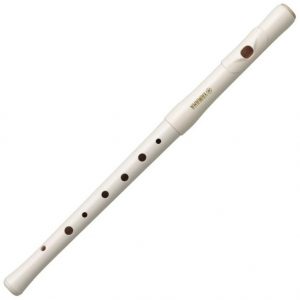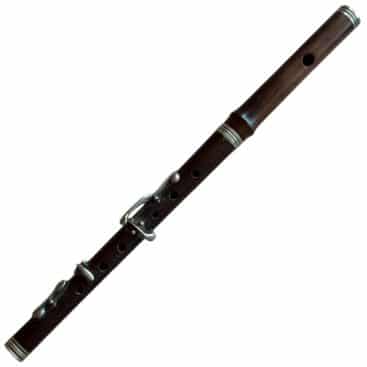Fifes are small, high-pitched, transverse aerophones, that are similar to the piccolo. The fife originated in medieval Europe and is often used in Fife & Drum Corps, military units and marching bands. Someone who plays the fife is called a fifer. The word fife comes from the German Pfeife, or pipe, which comes from the Latin word pipare.
The fife is a diatonically tuned instrument commonly consisting of a tube with 6 finger holes and an embouchure hole that produces sound when blown across. Modern versions of the fife are chromatic, having 10 or 11 finger holes that allow any note to be played. On a 10-hole fife, the pointer, ring and middle fingers on both hands remain in the same positions as the 6-hole fife, while both thumbs and both pinky fingers are used to play accidentals. An 11-hole fife has holes positioned similarly but adds a second hole under the right middle finger.
Fifes are made primarily of wood, such as: blackwood, grenadilla, rosewood, mopane, pink ivory, cocobolo, boxwood, maple and persimmon.
Information above courtesy of Wikipedia.
Fifes are most commonly used in Fife & Drum Corps, but can also be found in folk music, particularly Celtic music. Some Caribbean music makes use of fifes, which are usually made from bamboo.
Military and marching fifes have metal reinforcing bands around the ends to protect them from damage. These bands are called ferrules. Fifes used in less strenuous conditions sometimes have a lathe-turned, knob-like decoration at the ends for similar reasons. Some fifes are entirely made of metal or plastic. Modern fifes are two or three piece constructions, and incorporate a sliding tuning joint made of metal or cork.
-
Fifes
Yamaha Fife
£11.00The Yamaha Fife has a rich tone and good playability. Its clear sound carries well, especially suited for fife and drum corps
18 in stock
-
Fifes
Vintage Wooden Fife
£40.00This Vintage Wooden Fife needs new pads & a new headcork. When this is done you will have a really nice early 20th century instrument.
Or just leave it as it…1 in stock


